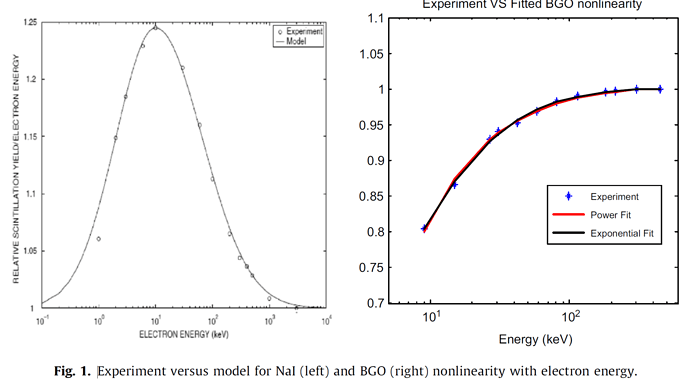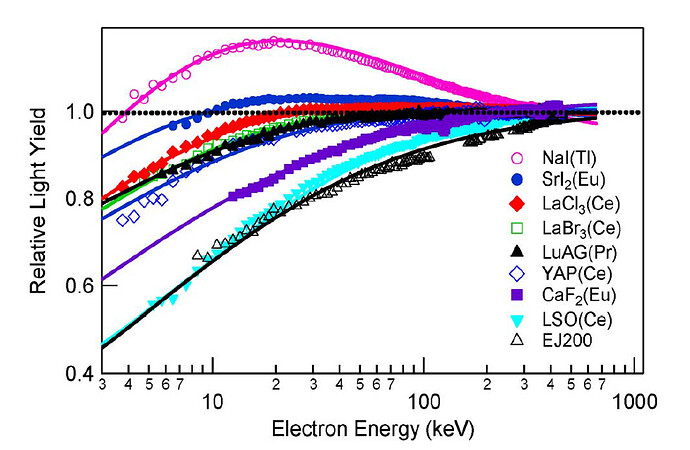Dear FLUKA community
As already described in previous posts, I’m currently working on simulating the gamma-ray spectral detector response for NaI(Tl) detectors using an event-by-event approach. For that purpose, I’m adopting the detect card together with the usreou.f user routine (cf. https://fluka-forum.web.cern.ch/t/prompt-decay-radiation-from-isotopes/1479; Energy deposition: DETECT or MGDRAW). So far, everything is working perfectly and I got already good results in benchmark comparisons with experimental data.
There is only one small issue, i.e. a systematic bias in the valley between the Compton edge and the full energy peak/photopeak in the simulated spectra. This bias is expected and can be linked to the neglected nonlinear electron scintillation efficiency [1-4] in my approach, i.e. I’m scoring the full energy deposited by gamma-rays and electrons per event and to my knowledge, FLUKA doesn’t account for scintillation efficiency by default . Therefore, I’m wondering, if it is possible to incorporate the nonlinear electron scintillation efficiency in a FLUKA simulation? At the moment, I have the following two ideas:
-
Offline approach: Try to obtain the deposited energy for each electron interaction in the scintillation crystal during an event by a scoring user routine (maybe also usreou.f?). Afterwards, postprocess this electron data by the proper scintillation efficiency function, e.g. the one published by [4]. This offline approach has two disadvantages. First, I guess it will produce huge files. Second, I’m not sure if it is possible to obtain the electron data at all.
-
Online approach: Try to change the transport physics in the FLUKA simulation by adopting again a user routine, i.e. incorporate the nonlinear electron scintillation efficiency function in the code itself. Unfortunately, I have no idea if this is possible and if yes how to do that.
What do you think? Do you have any other idea or did any of you already implemented something similar? Or is there a standard FLUKA card, which can model scintillation efficiency functions?
Thanks for your support
Best
David
[1] doi10.1016/0029-554X(81)91225-8
[2] doi10.1016/S0969-8043(02)00140-9
[3] doi10.1016/J.APRADISO.2011.12.006
[4] doi10.1016/J.APRADISO.2011.11.003

